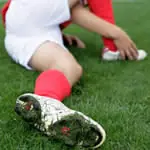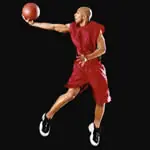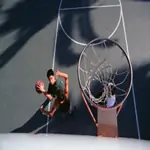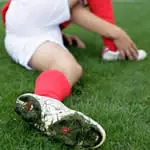Conditioning
The primary goal of your conditioning program should be to get in peak basketball shape. There is a huge difference between being fit and being in basketball shape. Being able to run three miles is great for cross-country but not necessarily for basketball. Basketball is a game of starting and stopping and jumping with varying bouts of very high intensity activity. Your conditioning workouts should mimic this. You should aim for each workout to incorporate drills that include sprinting, cutting, back pedaling, defensive sliding, and jumping. The more game-like the drill, the better. You must go all out every rep of every drill in every workout to truly reach your conditioning potential.
There are two reasons why you should participate in a comprehensive conditioning program; the first is for injury prevention. It is important acclimate your body's muscles and joint structures through the specific motions used in basketball. If your conditioning program only incorporates straight-ahead sprinting (a typical track workout), you will not sufficiently prepare the hip, groin, and ankle areas, all of which are high-risk areas for basketball players. The second reason you need to condition is for performance enhancement. A proper conditioning program establishes a solid fitness foundation and will reduce your mental and physical fatigue toward the end of a game.
A good portion of every game is played in a defensive stance and thus a well-designed conditioning workout should reflect this. You must be trained to stay in, and move from, a solid defensive position for several minutes at a time. Sprints are only a part of the overall program. To get into great basketball shape, your conditioning program must be:
- Energy system specific. Your conditioning drills need to be short to medium in duration (15 seconds to two minutes) and very intense with limited rest.
- Movement specific. Utilize basketball movement patterns: sprinting, back pedaling, defensive sliding, and jumping (limit jumping and emphasize defensive position). Stress changing direction (agility) and the importance of being able to plant off of either foot. Emphasize being in a low and athletic stance at all times with hands up.
- Progressive. You need to increase intensity, increase volume, and/or decrease rest. Your workouts should get progressively harder.
Time: Perform each drill for 45 seconds
Reps: Perform 4 reps for each drill
Rest: Rest 60 seconds between drills
Zig Zag
Start in one corner of the court. Sprint to the closest elbow, reverse pivot, and defensive slide to where mid-court and the sideline intersect. Then drop step and sprint to the next elbow, reverse pivot, and defensive slide to the corner baseline. Lastly back pedal (hands held above your head) back to the starting point. Repeat for the desired time or reps.
Full Court Z
Start in one corner of the court. Defensive slide (facing away from the court) up the sideline to mid-court, drop step, and sprint diagonally to the opposite corner (on the same baseline) from where you started. Then back pedal (hands held above your head) to the corner of the far baseline. Then jog the baseline and begin the drill again from this corner.
Hourglass
Start in one corner of the court. Sprint diagonally across the court to the opposite corner, drop step, and defensive slide (facing the court) to the other corner. Sprint diagonally across the court to the opposite corner, drop step, and defensive slide (facing the court) back to where you started.
Up the Alley
Start at one elbow. Sprint straight ahead to the far baseline, defensive slide to the close sideline, back pedal (hands held overhead) the length of the court, and then defensive slide to the lane and repeat for desired reps or time.
- 3
- of
- 3







Discuss This Article